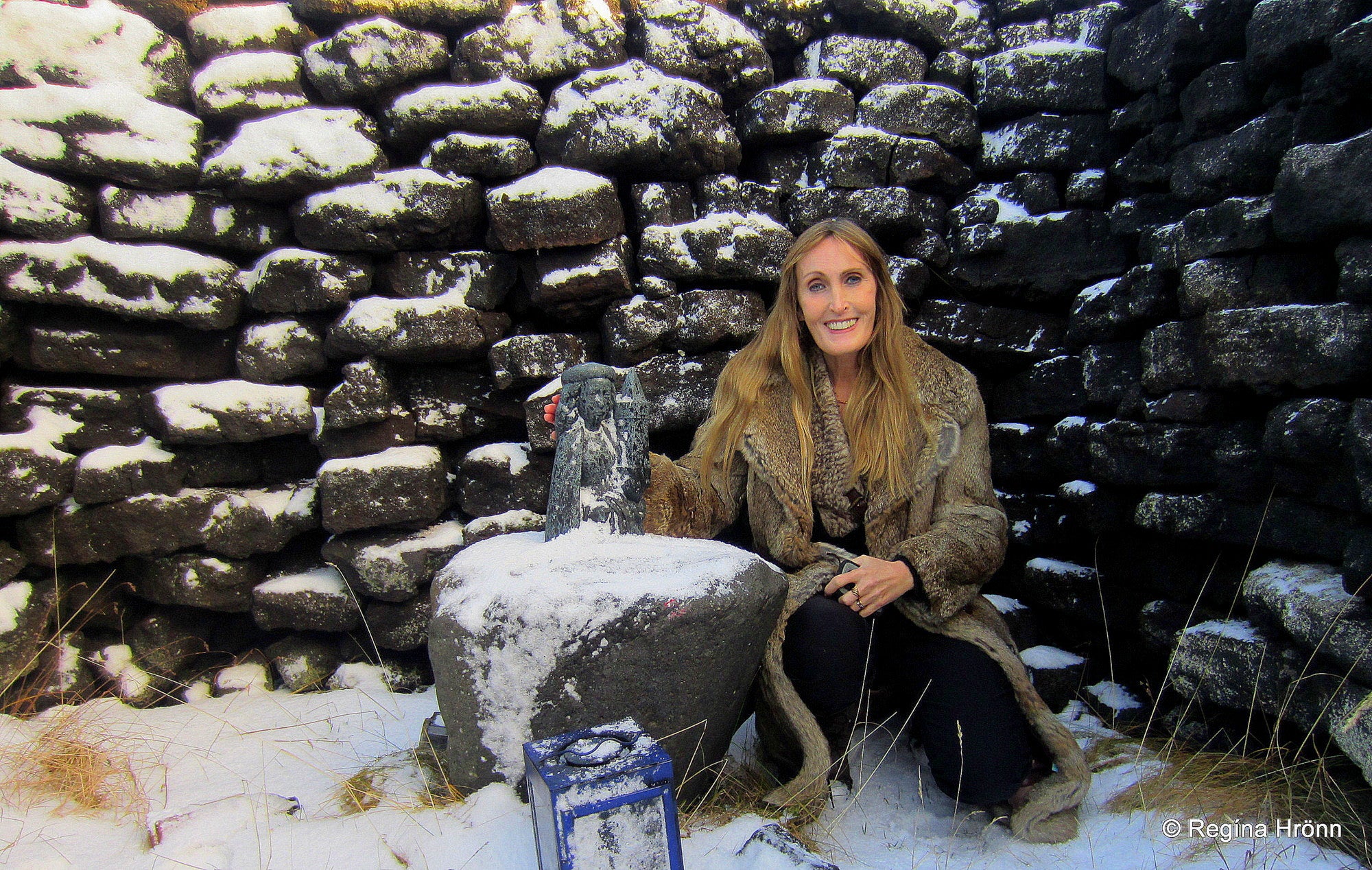
Barbörukapella - the Chapel of St. Barbara in Kapelluhraun in SW-Iceland

In my last travel-blogs I have shown you several churches in Iceland and told you about folklore and stories related to these churches, like the votive Strandarkirkja church.
But did you know about the chapel in the Kapelluhraun lava field in the Great-Reykjavík area? It is called Barbörukapella - the Chapel of St. Barbara and we have no idea how old it is.
Top photo: Standing by the entrance to Barbörukapella chapel
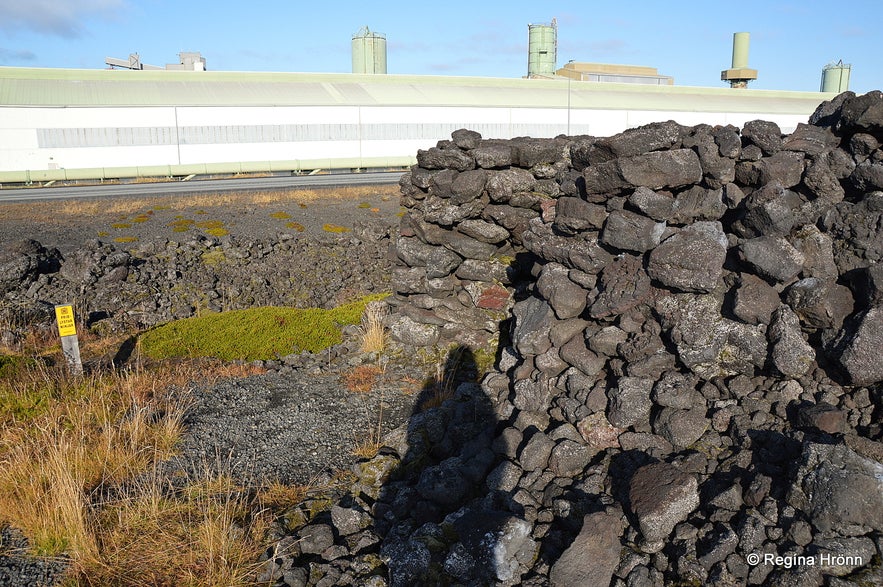
Barbörukapella chapel is opposite the road from an aluminum smelter - old meets new
The reconstruction of the old chapel is located on the top of a lava mound, opposite the ISAL aluminum smelter in Straumsvík by the busy road Reykjanesbraut, the one which leads from the international airport in Keflavík.
Everybody who drives to and from the airport via Reykjanesbraut road passes by the chapel in the lava, so keep an eye out for it when you see the aluminum smelter.
The chapel is made of lava so it blends in with the lava field and not many people give this chapel a second glance. But once you know about it then you cannot pass it without looking for it in the lava.

Barbörukapella and the information sign
This old chapel seems must have been both a chapel and a shelter in bad weather for those travelling on the Alfaraleið - the thoroughfare in the Nýjahraun - Kapelluhraun lava field.
Inside the chapel, people could pray but also make a fire to keep warm and cook food.
It is believed that this road through the lava was made shortly after the volcanic eruption back in the 12th century, as soon as the lava cooled down sufficiently.
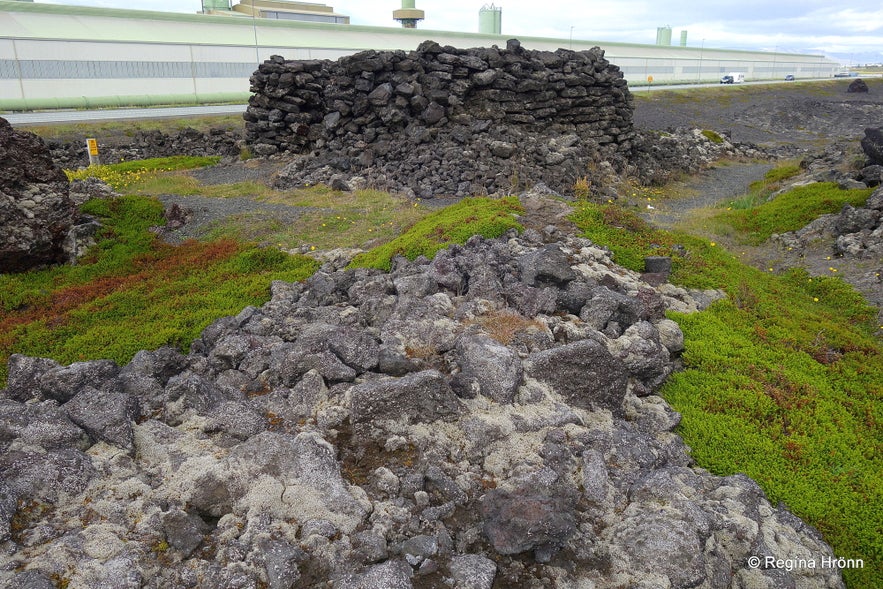 Parts of the old road by Barbarökapella chapel
Parts of the old road by Barbarökapella chapel
You can still see a small part of the 1.5 m wide road by Barbörukapella. It is on your right-hand side if you stand in front of the entrance to the reconstructed lava chapel.
Kristján Eldjárn, the Director of the National Museum of Iceland, and later the President of Iceland, excavated the ruins of the chapel in 1950.

A replica of the clay statue inside Barbörukapella
He and his coworkers found several pieces of objects on the floor of the chapel, a broken piece of a pearl made of amber, broken pieces of a clay pot, brass objects, pieces of horseshoes, several broken nails, and pieces of iron. And a part of a clay pipe.
The most remarkable object they found was a small clay statue of St. Barbara holding her signature tower.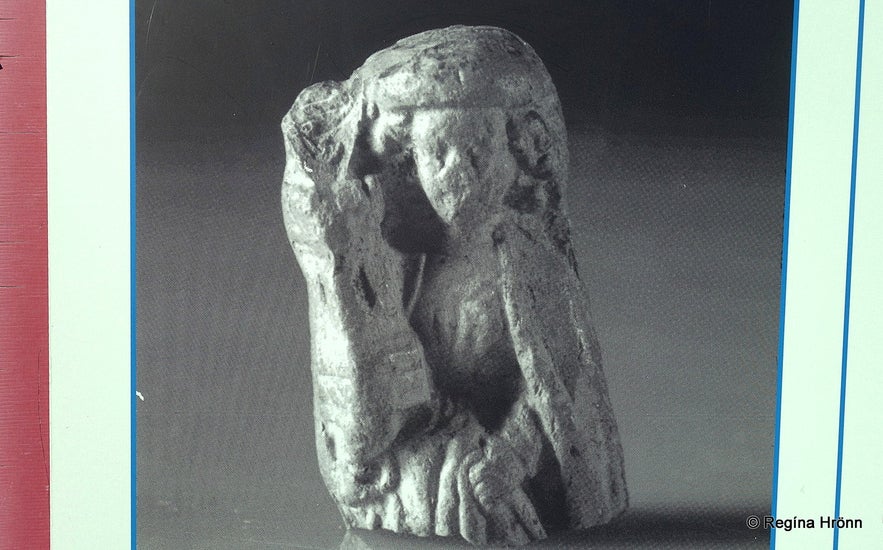
I took a photo of the original statue of Barbara on the information sign - it is very small
The statue was most likely made in Utrecht in Holland, but that is only a guess as many such statues came from Utrecht.
The original statue is in the possession of Þjóðminjasafn Íslands - the National Museum of Iceland.
I visited the museum to have a look at the statue and was surprised at how tiny it is. It was impossible to take a photo of it as it is under glass, so I include a photo of it which I took of the information sign by Barbörukapella chapel.
You can also see a photo of the statue at Sarpur.

Visiting Barbörukapella in the snow - I get filled with serenity when I see the statue
The chapel was back then in a relatively untouched lava field, a bit sunken into the lava, but this area has changed quite a bit since Kristján examined the chapel.
The chapel is not big, 2.40 m in length and 2.10-2.20 m in width. The height on the inside ranges from 0.95 - 1.8 meters.
The walls of the chapel are 1 meter thick. Parts of the chapel had collapsed and many stones had fallen into the chapel when Kristján excavated it.
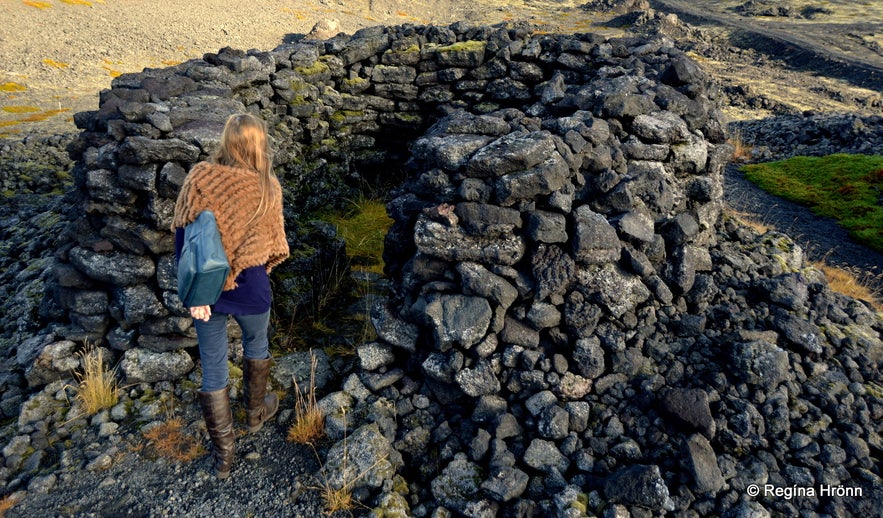
Barbörukapella
Kristján Eldjárn believed that the chapel was in square shape judging from the floor, but it was later rebuilt in an oval shape.
Here we are talking about the original chapel about which Kristján Eldjárn wrote a very detailed description in Árbók hins íslenska fornleifafélag and from which I got very good information for this travel-blog.
The chapel was most likely used in the Catholic period of Iceland (until 1550). And a clay pipe was found in the chapel, so it might have been used as a shelter until at least the 17th century.
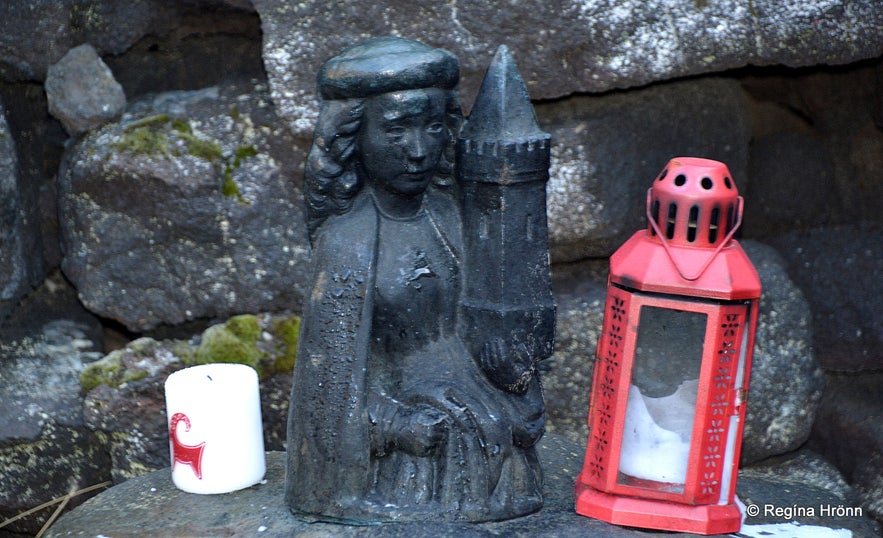
Candles by the statue
The chapel was reconstructed by Catholics in the late 20th century and the statue of St. Barbara was placed inside the chapel.
I read that the management of the ÍSAL aluminum smelter financed the installation of the new statue in the chapel.
The statue that Kristján found in the chapel is very small, only 3.3 cm. It was not intact as only the upper part of it was found in 3 pieces, but originally it would have been 5.5 cm.
The statue of St. Barbara in the snow
The bronze replica is a little bit bigger, made to the liking of the old statue from photos of the original statue. It was made by Walter Mellmann from Osnabruck in Germany - the date 4.12.1981 is written on a small plaque by the statue.
It is so lovely visiting the chapel and kneeling by the small statue of St. Barbara. There is something so very holy about this open chapel made out of lava rocks in the middle of a lava field. Just ignore the aluminum smelter and the busy road.
Sometimes I see candles and lanterns by the statue, so it is obvious that people come here to pray and make a pledge to St. Barbara.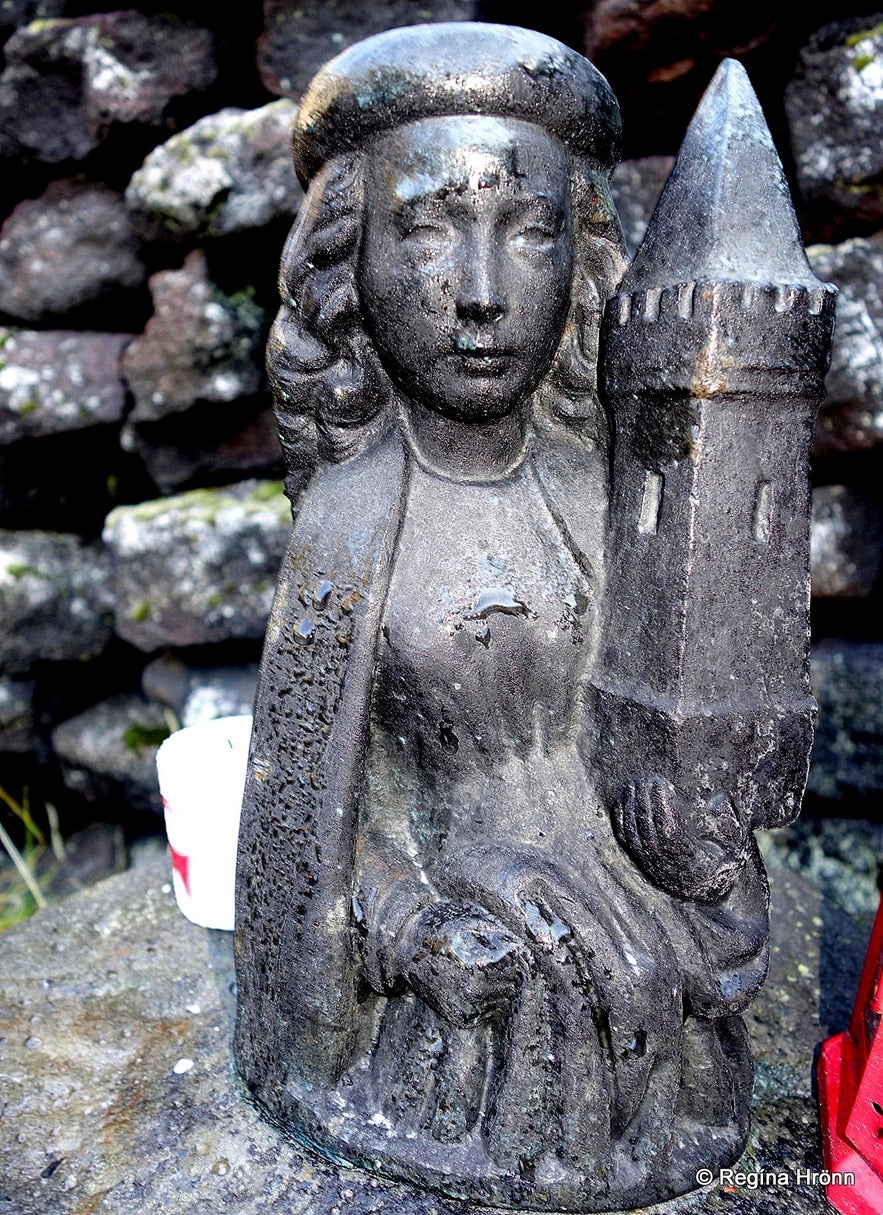
The statue of St. Barbara up close - isn't it lovely?
The state religion in Iceland is Lutheran, so I guess that it must be Catholics who mainly come here to pray. Not that there is any difference, but we don't have any statues of saints in our churches. I say a prayer here whenever I stop by the chapel.
People would make a pledge to St. Barbara f.ex. against fire and explosions, so that might be the reason for placing her in a chapel in a lava field.
Maybe to ask her to prevent another calamity in this area, as who wants a massive hot lava flow rushing in their direction? There are so many lava fields in Iceland and who knows what lies hidden beneath them?
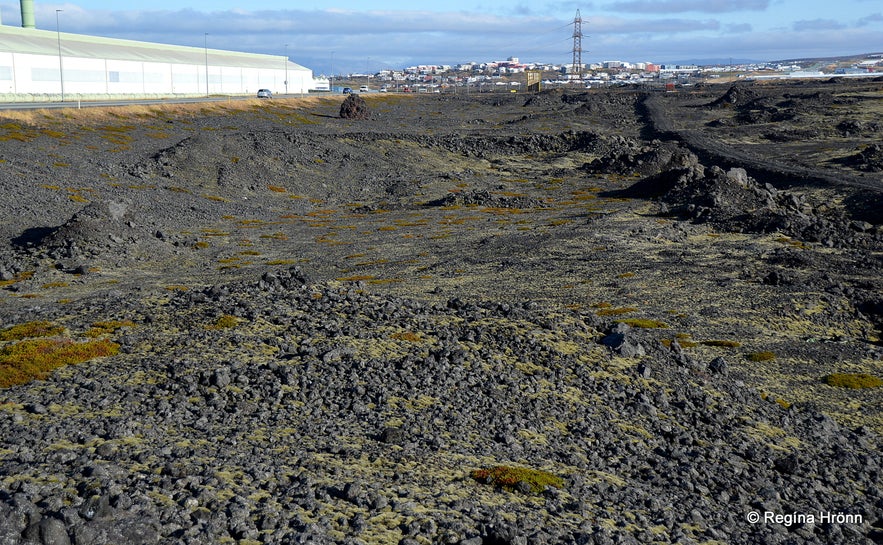
Kapelluhraun - a lot of the lava has been removed
Nýjahraun or Bruninn lava field stems from a volcanic eruption in a row of craters by Undirhlíðar on the Reykjanesskagi peninsula back in the 12th century.
Or at least after the age of settlement in Iceland, seeing that it was referred to as Nýjahraun meaning the New lava field.
It was mentioned in an old annal that in the year 1343 a ship had been stranded by Nýjahraun. And this lava field is mentioned in the 2nd and 17th chapters of the Kjalnesinga saga.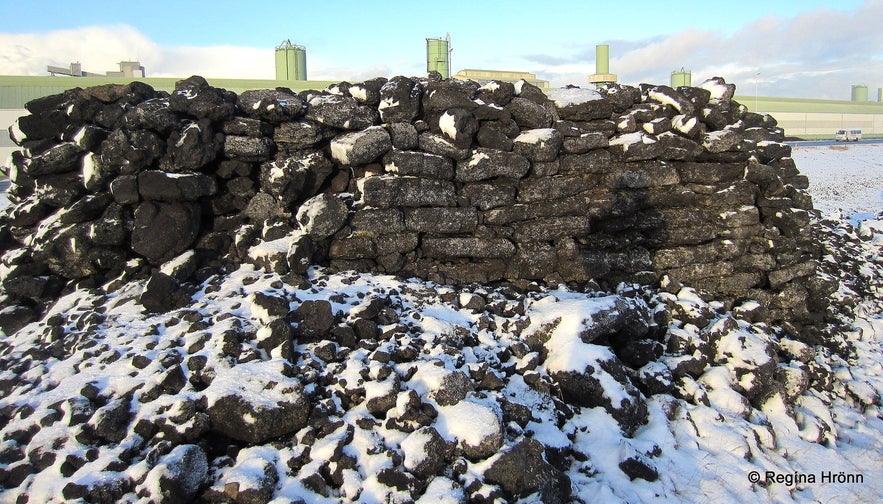
Barbörukapella is stacked with lava from the lava field
The lava field by the chapel is called Kapelluhran - the Chapel lava field.
A lot of the lava has been removed for the foundations of buildings in the Great-Reykjavík area, for road construction, and when the aluminum smelter was being built in 1969.
So this area has changed quite a bit since Kristján Eldjárn was examining the remains of the chapel. Thank God that the bulldozers didn't remove the remains of the chapel before it was preserved.
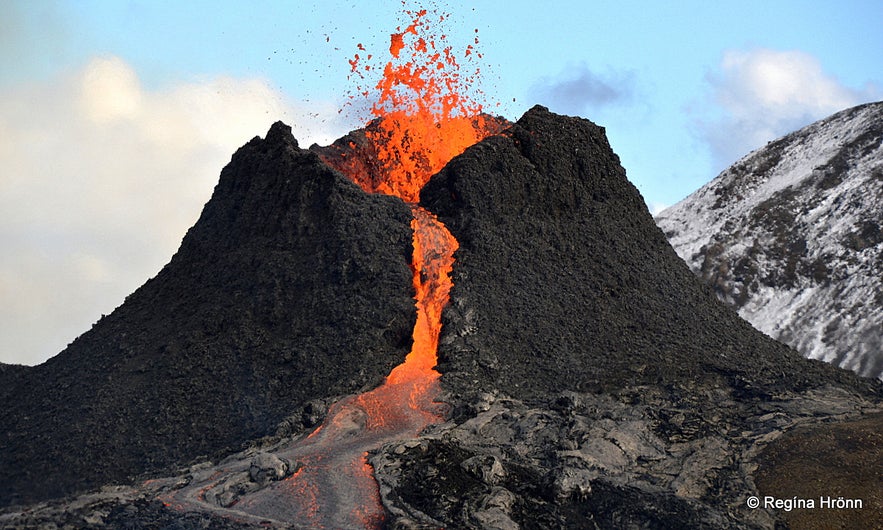
The volcanic eruption in Geldingadalir in 2021
Now the Reykjanesskagi peninsula has become alive again, after having been dormant for many centuries, so we who live here in the southwest corner of Iceland, have started worrying that a volcano might erupt too close to home.
The last eruption on the Reykjanesskagi peninsula was in 2021, and we are still experiencing earthquakes which can be felt in Reykjavík, where I live.
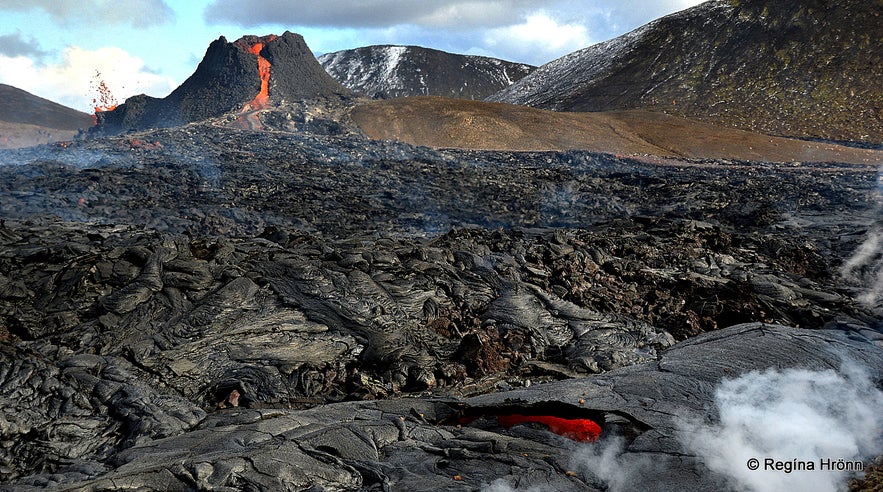
The volcanic eruption in 2021 on the Reykjanesskagi peninsula
I have written 2 travel-blogs about this latest volcanic eruption on the Reykjanesskagi peninsula:
The Volcanic Eruption in Mt. Fagradalsfjall and Geldingadalir in SW-Iceland
A Helicopter Ride to the Volcanic Eruption in Mt. Fagradalsfjall in SW-Iceland
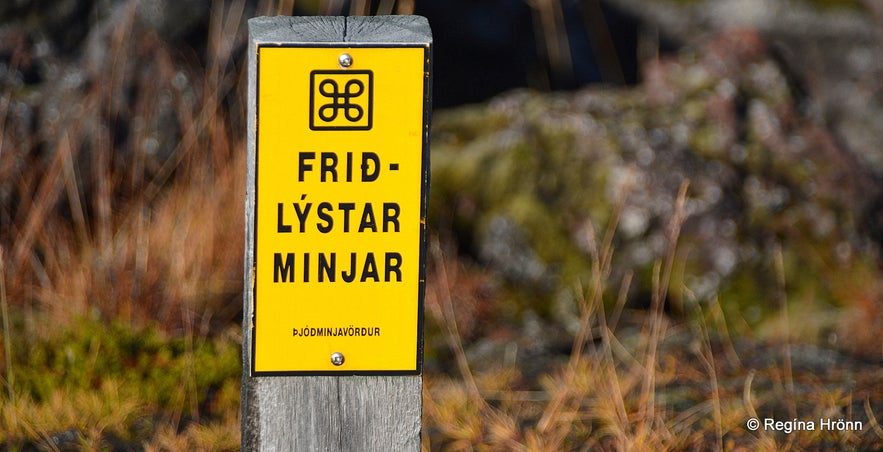
The yellow sign from the Director of the National museum - preserved antiquities
Barbörukapella was rebuilt after it had been examined, but the long collapsed roof was omitted.
The door opening is on the west side according to tradition, i.e. our churches face east, but the church doors are on their west side.
Kristján Eldjárn declared this site protected after examining it and the yellow sign above was placed by it.
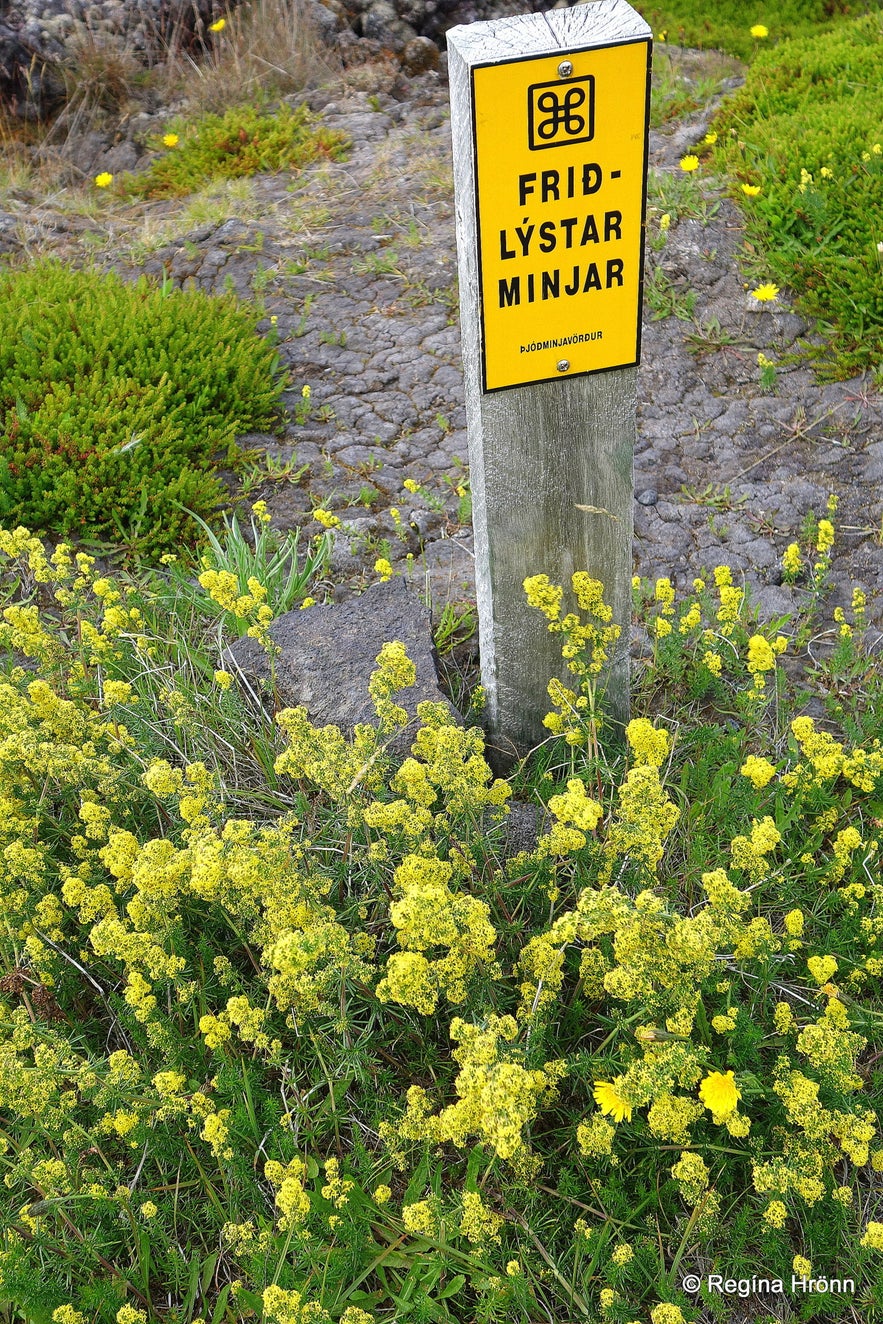 The yellow protection sign
The yellow protection sign
You can see this sign in many places in Iceland by protected sites and preserved antiquities as I have f.ex. shown you in my travel-blog: Viking Ruins and Burial Mounds I have visited on my travels in Iceland.
In many places, this sign is very worn or has blown away in the wind so it takes some doing to look for it, but it is well maintained here at Barbörukapella.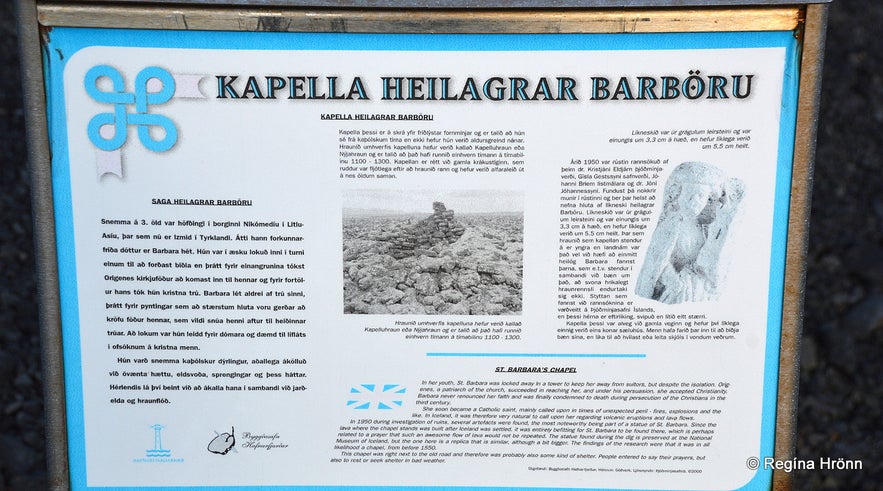
One of the information signs by Barbörukapella - this one Hafnarfjörður town and Byggðasafn Hafnarfjarðar erected
St. Barbara was also the patron saint for seafarers and travellers. And I have read that she was also the patron saint for miners and founders.
And she was amongst the patron saints of Haukadalskirkja church and Reykholtskirkja church.
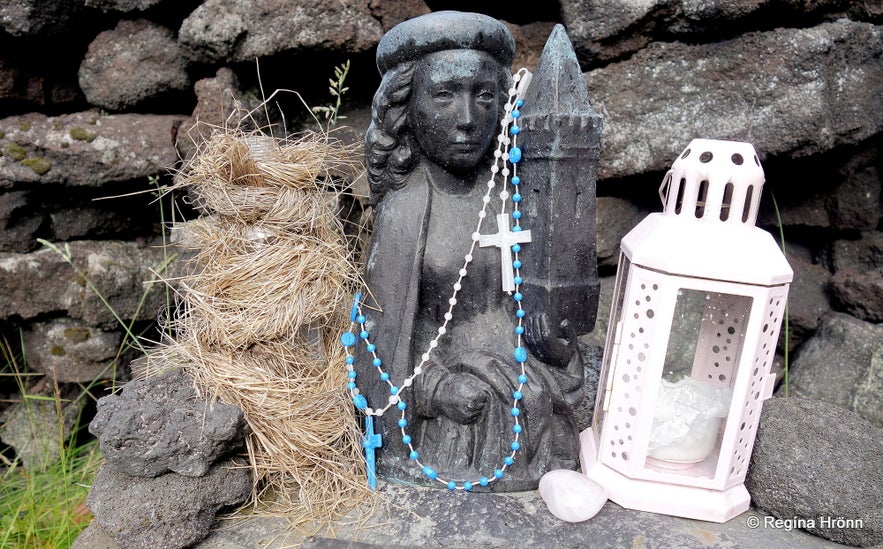 There were many religious objects in Barbörukapella last time I visited it
There were many religious objects in Barbörukapella last time I visited it
Bishop Jón Arason at Hólar also had an image of St. Barbara stitched in his choir cope. I tell you about Jón Arason a little later in this travel-blog.
Below is a photo I took back in the summer of 2010 of a replica of the choir cope of Jón Arason in Hóladómkirkja cathedral. The original is on display at Þjóðminjasafn Íslands.
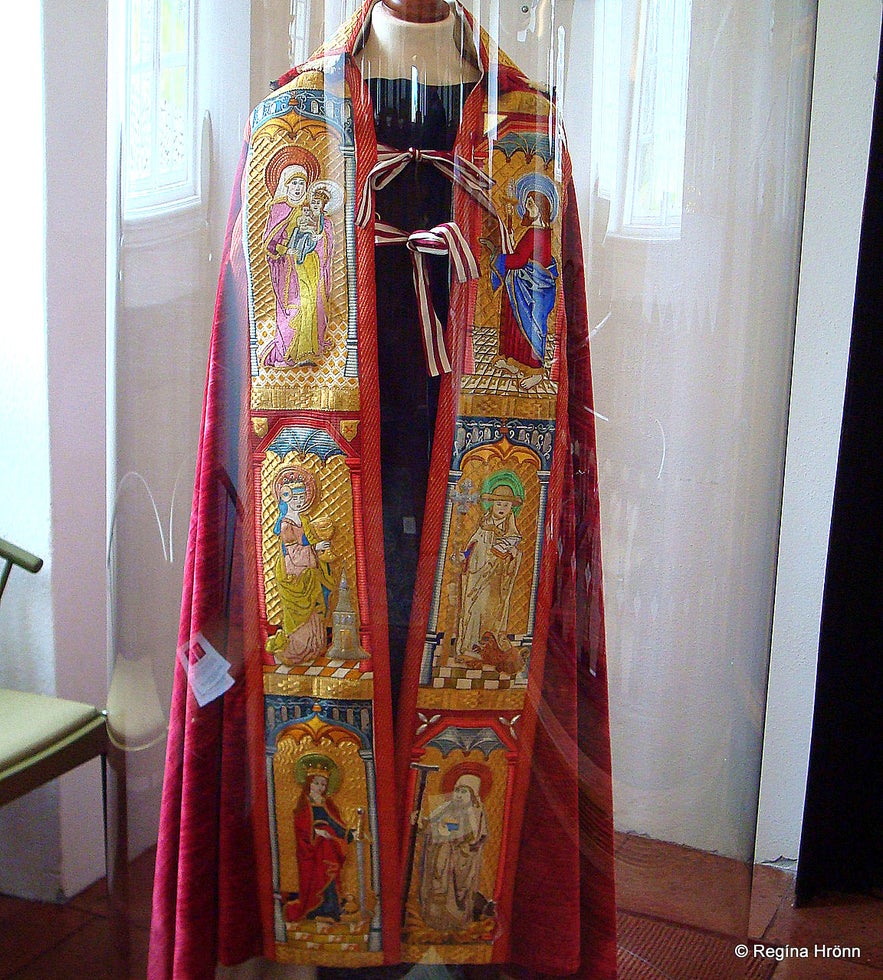
A replica of the choir cope of Jón Arason at Hólar - St. Barbara is in the middle to the left
This is what Þjóðsögur Jóns Árnasonar - the Collection of Folklore by Jón Árnason says about the Kapelluhraun lava field - Volume II, page 78:
"In Gullbringusýsla county a large lava field is to be found between Hafnarfjörður and Vatnsleysuströnd. A part of the lava field is called Kapelluhraun. It gets its name from a chapel in the lava.
The chapel is on the north side of the road, stacked with lava rocks in the shape of a "borg" (here you can see photos of what we call "borghlaðið").

Barbörukapella chapel
The doors must have faced south, but now they are filled with dirt and moss. The north part of the chapel is higher up than the south part.
The story goes that in the chapel is buried one of the procurators who were earlier on at Bessastaðir. He was attacked in the lava field, killed, and buried here."
(Translated into English from Þjóðsögur Jóns Árnasonar - the Collection of Folklore by Jón Árnason).
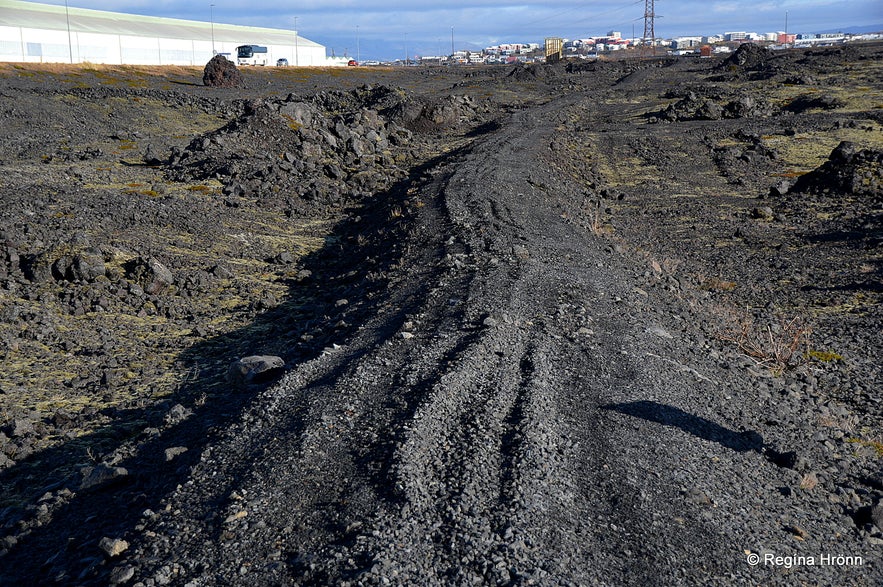
The gravel road leading to the chapel
What Jón Árnason is referring to has to do with the execution of Catholic Bishop Jón Arason and his 2 sons back in 1550.
Here the folklore tells us that one of the men of Kristján skrifari, the envoy of the Danish Governor at Bessastaðir, was killed here and buried in the chapel.
Norðlendingar - the Northerners in 1551 killed many men to revenge for the murder of the Catholic bishop Jón Arason at Hólar in Hjaltadalur in North Iceland and his 2 sons.
There were no signs of graves by the chapel though when Kristján Eldjárn examined the chapel in 1950 or 400 years later.
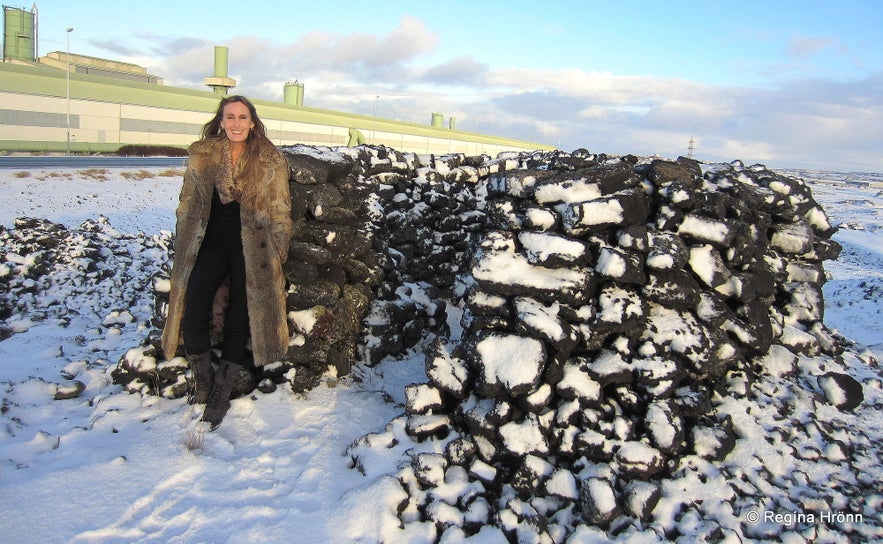
By Barbörukapella chapel in the wintertime
Many men were killed here at Suðurnes to revenge for this atrocity, the beheading of the Catholic bishop and his 2 sons, including Kristján skrifari who was responsible for the beheadings.
He had been visiting Kirkjuból farm at Miðnes with his men and the Northerners killed him there.
The men who had been killed at Kirkjuból were buried by the farm. The story goes that the body of Kristján skrifari was moved to Bessastaðir and that they might have kept it overnight in the Barbörukapella chapel.
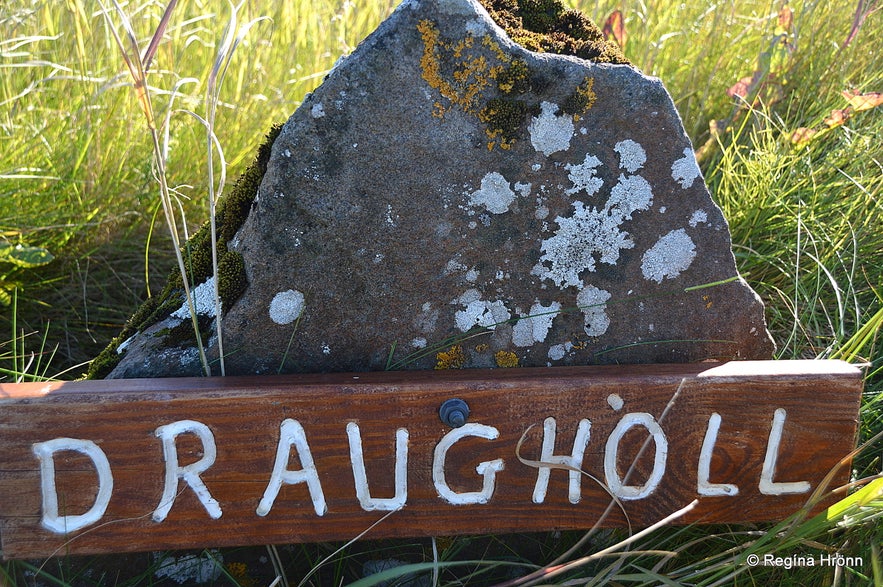
Draughóll - Ghost mound at Garður
The other men who had been killed at Kirkjuból started hunting the living (there are many such stories in the Icelandic Sagas, which are much older than these events).
What to do when this happens? Exhume the bodies, cut off their heads, and put their nose forward at their buttocks. That will stop them!
We went to Garður and Kirkjuból to see the locations of these events and found this rock with the sign Draughóll - Ghost mound. We must go back and find some ruins at Kirkjuból. We were not sure what to look for when we visited this location.
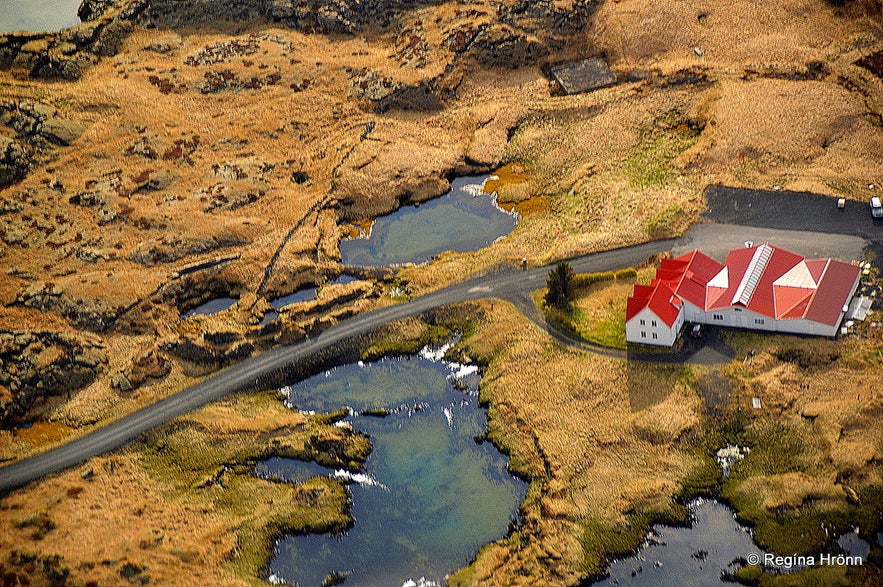
Straumur opposite the road from the chapel as seen from a helicopter
The following year, the killings at Kirkjuból farm and the abuse done to the corpses was revenged and the farmer at Kirkjuból was beheaded at Straumur for allegedly helping the Northerners enter his farm.
There are some really gruesome narratives regarding these killings but I will spare you the gory details, as in this travel-blog I am focusing on the Barbörukapella chapel.
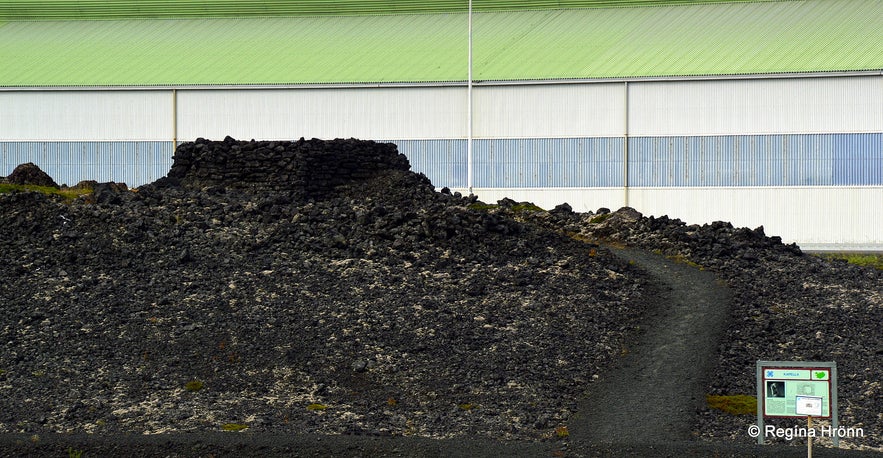
The chapel and the aluminum smelter in the background
Now, back to modern times. The aluminum smelter had plans for expansion, but there is not much room for expansion as the Barbörukapella chapel is preserved.
Kristján Eldjárn said that the chapel in Kapelluhraun could be compared with the chapel on top of Mt. Helgafell on the Snæfellsnes peninsula: The Holy Mt. Helgafell on the Snæfellsnes Peninsula & the 3 Wishes.
And that in Christian countries small chapels like this one dating back to the middle ages can be found by the road.

A statuette of St. Barbara found at Skriðuklaustur in East Iceland
Kristján also mentions that sometimes crosses were erected by which people could pray, like the one I wrote about in my travel-blog: Njarðvíkurskriður Screes and the Monster Naddi in East-Iceland - Icelandic Folklore.
Another statue of St. Barbara was discovered in the ruins of Skriðuklaustur, an Augustinian monastery, in East Iceland - above you can see a photo I took of the statue when it was on display at the National Museum.
I wrote another travel-blog about Skriðuklaustur and the Archaeological Excavations in East Iceland, if you are interested in seeing the surroundings in which the statue was found.

Hafnarfjörður - the Town of Elves
Barbörukapella chapel stands alone in the lava south of the town Hafnarfjörður and it is well worth a visit. And close by is Straumur where photographers love to take photos.
Hafnarfjörður town is known as the Town of Elves as you can see from the sign above, which I zoomed in on from Barbörukapella chapel.
It is also known as the Town in the Lava as it is built on a lava field. And the Viking town as here you will find the Viking Village and the annual Viking Festival is held in Hafnarfjörður town: The Annual Viking Festival in Hafnarfjörður Town in Iceland.
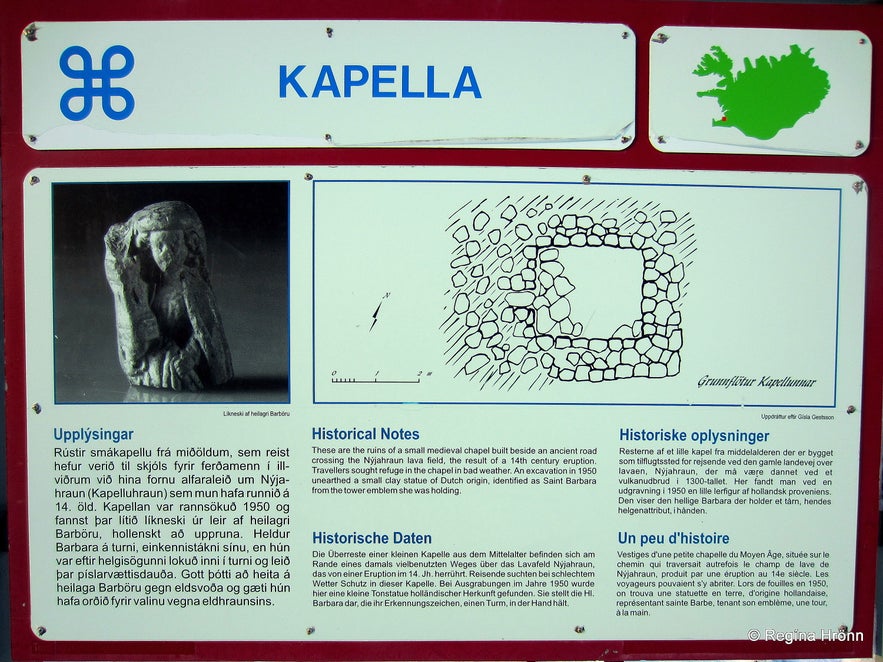
One of the information signs by Barbörukapella - erected by Þjóðminjasafn Íslands
Barbörukapella chapel is not marked on Google maps, but Barböruvegur road is marked and leads to the chapel.
Sources and further reading (in Icelandic):
Kapelluhraun - Þjóðsögur Jóns Árnasonar II, page 78.
Hraunavinir - Kapellan í Kapelluhrauni
Fjarðarfréttir - Kapellan í Kapelluhrauni
Árbók his inslenska fornleifafélags 1955 - Kapelluhraun og Kapellulág - Kristján Eldjárn
Árbók hins íslenska fornleifafélags - af heilagri Barböru og uppruna hennar
Ferlir - Kapellan í Kapelluhrauni
Ferlir - Kapellan í Hrauninu og Heilög Barbara
Ferlir - Aftaka Jóns biskups Arasonar og atburðir á Suðurnesjum
他おすすめのブログ
ブルーラグーン - Blue Lagoon
まずブルーラグーンという世界的に有名なスパについて紹介したいと思います。アイスランドの首都から車で30分のところにあるとても綺麗な温泉施設です。わき水のほかにアイスランドには地熱発電施設がたくさんあり、そこからの温水を利用しています。 でも、Blue Lagoonの魅力はそれだけではありません。ラグーンのミネラルの多くは、あなたの肌のに非常に良いです。例えば、シリカを顔に付けたら、肌がとてもっと読むIcelandic Nature - アイスランドの自然
アイスランドの自然 多くの観光客が自然を見るためにアイスランドに来ると思います。自然は汚くなくて、とても綺麗です。アイスランドの自然はほとんど、昔のままであると思います。 アイスランドの自然でいろいろなアクティビティができます。自分が一番好きなアクティビティは山のハイキングです。夏によく家族とハイキングトリップに行きます。普通に15-20人のグループと行って、みんなとキャビンで泊まります。もっと読むアイスランドの魚料理
アイスランドの魚料理。 アイスランドの経済の最も重要な業種は観光と漁業です。従ってアイスランド人は魚料理がとても好きです。それは魚が新鮮だからだと思います。日本の魚料理と違うのは作り方だと思う、生で食べるよりアイスランド人が普通に魚を焼く。でも日本みたいに全体調理しなくて、アイスランド人が魚を一人分のサイズに切って調理するんです。 魚料理と釣りが好きなら、アイスランドに来たらとてもいもっと読む

アイスランド最大の旅行アプリをスマートフォンにダウンロード。旅のすべてを1か所で管理できます。
アイスランド最大の旅行マーケットプレイスをポケットに。スマートフォンのカメラでQRコードを読み取り、表示されるリンクをクリックしてください。電話番号またはメールアドレスを入力すれば、SMSやEメールでもダウンロードリンクを受け取ることができます。
















